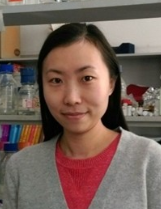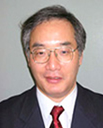Genome Instability & Disease Volume 1. Issue 4 简介
1. Deacetylation of a deacetylase drives the DNA damage response. | Raissa Ng,Michael S.Y.Huen.
SIRT6 is a key regulator of the DNA damage response and plays an important role in maintaining genome stability. In this commentary, Michael S.Y. Huen and Raissa Ng explain the latest findings in SIRT6 research, focusing on the data published earlier this year by Meng, F. et al. in eLife. They highlight the important functions of the SIRT1–SIRT6 axis in the DNA damage response, and outline the underlying mechanisms of this axis in co-regulating DNA damage repair.
SIRT6是DNA损伤修复的关键调节因素,在维持基因组稳定中起重要作用。 Meng,F.等人今年初在eLife发表的论文阐述了SIRT1–SIRT6轴在DNA损伤反应中的重要功能,并概述了该轴在共调节DNA损伤修复中的潜在机制。对此, Michael S.Y. Huen和Raissa Ng进行了点评与讨论。本文的通讯作者为香港大学李嘉诚医学院的Michael S.Y. Huen教授,Raissa Ng为第一作者。

Michael S.Y. Huen教授 https://www.sbms.hku.hk/staff/michael-shing-yan-huen
全文下载:https://link.springer.com/content/pdf/10.1007/s42764-020-00018-7.pdf
2. DNA double-strand break end resection: A critical relay point for determining the pathway of repair and signaling | Yoko Katsuki, Penny A Jeggo, Yuki Uchihara, Minoru Takata and Atsushi Shibata.
DNA double-strand breaks (DSBs) constitute a common form of DNA damage that if left unrepaired or repaired incorrectly, can lead to cellular mutations and cell death. In this review, Yoko Katsuki and colleagues describe how cells can respond to DSBs via two different pathways: non-homologous end joining, which is fast but imprecise; or homologous recombination (HR) that is slow yet precise. They then explain how cells might “choose” between these two pathways. To do so, they focus on the principles of DSB end resection and how this process helps direct cells towards HR and regulate DNA damage signaling. Finally, they outline how the principals of DSB end resection might be integrated into cancer therapies.
DNA双链断裂(DSB)是一种常见的DNA损伤方式,如果不予修复或修复不当,可能导致细胞突变和死亡。 在这篇综述中,Yoko Katsuki团队描述了细胞如何通过两种不同的途径对DSB作出反应:一种是非同源末端连接(NHEJ),这种方法快速但不精确; 另一种是缓慢但精确的同源重组(HR)。 他们介绍了细胞如何在这两种途径之间选择,讨论了DSB末端切除术的原理以及该过程如何帮助将细胞导向HR并调节DNA损伤信号传导,并提出了DSB末端切除术与癌症治疗相结合,为癌症治疗提供参考。日本群马大学(GIAR)的Atsushi Shibata教授为本文的通讯作者,京都大学生物研究科放射生物学中心的Yoko Katsuki为本文的第一作者。

Atsushi Shibata教授 http://shibatalab.com/english/
全文下载:https://link.springer.com/content/pdf/10.1007/s42764-020-00017-8.pdf
3. Autophagy and DNA damage repair | Congting Guo & Ying Zhao
Autophagy and DNA damage repair are two closely related processes and the interactions between them are essential for ensuring genomic stability and cellular homeostasis. In this review, Congting Guo and Ying Zhao unravel the interplay between autophagy and DNA damage repair and explain their individual and combined impact on cell fate and genome integrity. As we continue to uncover the underlying mechanisms, there is potential to develop cancer therapeutics based on harnessing the essential crosstalk between these pathways.
细胞自噬与DNA损伤修复是两个密切相关的过程,它们之间的相互作用对于确保基因组稳定性和细胞内平衡至关重要。 在这篇综述中,赵颖团队揭示了自噬和DNA损伤修复之间的相互作用,并解释了它们对细胞命运和基因组完整性的影响。 其相互作用机制,对癌症治疗的研究,提供了参考。北京大学医学部的赵颖教授为本文的通讯作者,Congting Guo为本文第一作者。

赵颖教授 http://sbms.bjmu.edu.cn/jsdw/bssds/dsjs/200047.htm
全文下载:https://link.springer.com/content/pdf/10.1007/s42764-020-00016-9.pdf
4. The MRE11 nuclease promotes homologous recombination not only in DNA double-strand break resection but also in post-resection in human TK6 cells | Naoto Shimizu, Remi Akagawa, Shunichi Takeda, Hiroyuki Sasanuma.
Homologous recombination (HR) is a key DNA damage repair pathway that is essential for maintaining genome stability. We know that MRE11 nuclease has a key role in promoting HR as it initiates double strand break (DSB) resection. Now, Naoto Shimizu et al. provide evidence for a dual role for MRE11 in promoting HR both at the DSB resection and also at the post‑resection stages in human TK6 cells. This advancement in the field provides novel insight into how MRE11 promotes DNA damage repair and suppresses tumorigenesis.
同源重组(HR)是DNA损伤修复重要的途径之一,对维持基因组稳定性至关重要。 我们知道,MRE11核酸酶在启动双链断裂(DSB)切除过程中具有促进HR的关键作用。 在这篇文章中,Naoto Shimizu团队发现MRE11在人TK6细胞的DSB切除和切除后阶段在促进HR中起双重作用,该发现为MRE11如何促进DNA损伤修复和抑制肿瘤发生提供了新颖的见解。京都大学医学院放射遗传学系的Hiroyuki Sasanuma副教授和Shunichi Takeda教授为本文的共同通讯作者,Naoto Shimizu为本文的第一作者。

Shunichi Takeda教授http://www.med.kyoto-u.ac.jp/en/organization-staff/research/doctoral_course/r-016/
全文下载:https://link.springer.com/content/pdf/10.1007/s42764-020-00015-w.pdf
5. ATM‑deficient lung, prostate and pancreatic cancer cells are acutely sensitive to the combination of olaparib and the ATR inhibitor AZD6738 | Nicholas R. Jette, Suraj Radhamani, Ruiqiong Ye, Yaping Yu, Greydon Arthur, Siddhartha Goutam, Tarek A. Bismar, Mehul Kumar, Pinaki Bose, Steven Yip, Michael Kolinsky & Susan P. Lees-Miller
The ATM protein kinase signaling pathway is essential for ensuring efficient DNA damage repair but it is frequently mutated in many cancers. Interestingly, the PARP inhibitor olaparib can induce cell-cycle arrest, but not cell death, in ATM-deficient lung cancer cells. Here, Nicholas Jette and colleagues describe the results of combining olaparib with the ATR inhibitor AZD6738 in ATM-deficient tumor cells. They found that this combination resulted in the cell death of ATM-deficient lung, prostate and pancreatic cancer cells. The researchers thus propose that combined PARP and ATR inhibition might be an effective treatment strategy for patients with an ATM deficiency.
ATM蛋白激酶信号通路是DNA损伤修复至关重要的途径,但在许多癌症中经常发生突变。 研究人员发现,PARP抑制剂olaparib可以在ATM缺陷型肺癌细胞中诱导细胞周期停滞,但不会引起细胞死亡。 在本文,Susan P. Lees-Miller团队在ATM缺陷的肿瘤细胞中将olaparib与ATR抑制剂AZD6738联合用药,发现这种组合能够导致ATM缺陷型的肺癌,前列腺癌和胰腺癌细胞发生细胞死亡。 因此,研究人员提出,PARP和ATR抑制的联合使用可能是ATM缺陷的癌患者的有效治疗策略,为ATM缺陷的癌症治疗提供新思路。加拿大卡尔加里大学的 Susan P. Lees-Miller教授为本文的通讯作者,Nicholas R. Jette 和 Suraj Radhamani为本文的并列第一作者。

Susan P. Lees-Miller教授 https://cumming.ucalgary.ca/departments/bmb/profiles/dr-susan-p-lees-miller
全文下载:https://link.springer.com/content/pdf/10.1007/s42764-020-00011-0.pdf








用户登录
还没有账号?
立即注册